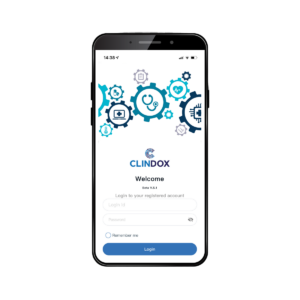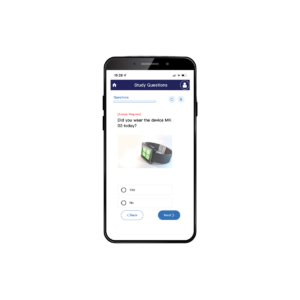Recent changes to IVDR transition timelines have been warmly welcomed. We explore whether or not these changes have gone far enough to allay widespread concerns over regulatory capacity for IVD manufacturers.
Changes to IVDR: the irresistible force of the Commission bested by the immovable object of Reality
No one likes change. Change is always unsettling. In business, of course, change usually means more cost and more distraction from the pure pursuit of making money. Those who are the subject of change will gnash their teeth and rend their clothing. Representations will be made; endless meetings of the parties will take place. Acres of comment will be written – repeated regurgitations of a relatively small number of known facts peppering a vast, unhygienic swill of feverish speculation. New ecological niches will open up and be rapidly populated by peddlers of expensive advice, promising to soothe your pain. The usual suspects.
Meanwhile, the agents of change will be nonplussed, and not a little hurt. They will be taken aback by the torrent of well-informed criticism and though rattled, remain dismissive of the implication that they have somehow not thought this thing through. Judge us not the miserly detail but on the honor of our intentions. Minor concessions will be made, greater urgency will be given to providing useful, functional advice and a plethora of “what abouts…” will be waved away as temporary problems that will resolve over time – inevitable when change is far reaching. Stands will be taken; lines will be drawn and dates carved in stone.
“Those are my principles, and if you don’t like them… well, I have others…” (Groucho Marx)
Until two weeks ago that’s been the story, pretty much, with the EU Commission and IVDR. Here we stand, we can do no other… until we can. Reality, of course, does have an annoying habit of being little bit unavoidable. The inevitability of the long-foretold crisis in testing availability has been starkly apparent for some time now. So, let us all swallow our recent exasperations and be grateful that the Commission has now bowed to the simple, brute fact that there is insufficient Notified Body capacity to meet the needs of IVDR and has proposed a sensible, pragmatic readjustment of the regulatory timelines.
While the date of application of the IVDR remains May 2022, their recent proposal will extend the time available for transitional provisions in the Regulation to allow for a “progressive rollout”. The extensions on offer depend on the classification of device:
Class of IVD Proposed date of application
IVDs with a certificate under the IVDD May 2025
D (such as HIV or hepatitis tests) – 4% of the market May 2025
C (including companion diagnostics and self-testing IVDs) May 2026
– 25% of the market
B – 49% of the market May 2027
A (sterile) – 0.01% of the market May 2027
A (do not require notified body certification) May 2022 (no change)
– 20% of the market
New devices not on the market under the IVDD May 2022 (no change)

Panic over?
Without wishing to sour what is likely to be widespread relief (not least in the Commission) there remain significant challenges facing manufacturers with respect to IVDR compliance in the short-to-medium term. While the dangers of procrastination are self-evident, what is being overlooked is that there are major new obligations for which there has been no further accommodation. Chief among these are the provisions concerning post-market surveillance (PMS) and vigilance for existing devices in the market place; these will still apply from May 2022 onwards. As with MDR, the range of devices that are subject to more exacting PMS has expanded considerably, as have the specific requirements of PMS.
Under IVDR, all manufacturers must have a PMS system; PMS must be comprised of the following elements:
- Post-market review of the device.
- Traceability/Documentation on device’s performance, quality and safety.
Article 79 of IVDR insists that a PMS system should be based on the PMS Plan; data needs to be collected and used as outlined in Article 79 (3). IVDR Annex III 1(b) clearly states that the PMS Plan must include a Post Market Performance Follow-up plan (PMPF plan) or a justification as to why a PMPF is not applicable.
Devices of risk classes A and B will need to prepare a PMS report (the PMSR) summarizing findings, data and other attributes generated from the plan (see Article 80). The PMSR can be created every five years.
Devices of risk classes C and D must generate a Periodic Safety Update Report (PSUR) as per Article 81. The PSUR is similar to PMSR in terms of outputs but also has additional requirements such as findings from the Post-Market Performance Follow-Up (PMPF) and sales information of the device. The PSUR is to be created at least annually
So, from May 2022 the amount of data that an IVD manufacturer will need to collect is set to increase dramatically, irrespective of when the regulations need to be met for the purposes of CE-marking. Never has there been a better time to invest in a modern digital platform to gather, analyze and disseminate this ever-intensifying gush of data. Now’s the time to give Clindox a call.
A Word From Our CEO
“We only have to look at the challenges facing medical device manufacturers in Europe as they grapple with MDR to get a glimpse of the future for Diagnostics companies facing the prospect of IVDR implementation. Here at Clindox we have believed for some time that digital technologies offer significant promise to streamline and de-risk the processes to meet these new regulatory compliance challenges. In this way we are helping companies keep their valuable medical device and diagnostics products in the healthcare system and available for the patients that need them!”
Simon Crowe, CEO at Clindox.

How CRFWEB can help you
Clindox has a natural advantage over many of our competitors as we can leverage the benefits of:
– Long established, low cost-base development and support centres of the highest calibre
– High degree of sponsor self-sufficiency for study builds (with cost-effective client onboarding processes and expert support as required)
– Solution stack delivered through a simple, flexible SaaS model
Objectively, cost-plus – the true driver obscured by the smoke and mirrors of pricing plans – favours our offer and to this end you will find our proposals will be far simpler than any of our competitors and notable by the absence of arbitrary, hard-to-justify significant variability.
All in all, we know that with our low cost-base and our ongoing commitment to self-sufficiency, simplicity and transparency, we will always provide an excellent value proposition without compromising on features or quality… whichever sector you’re from, and whatever your study or investigation needs are.









